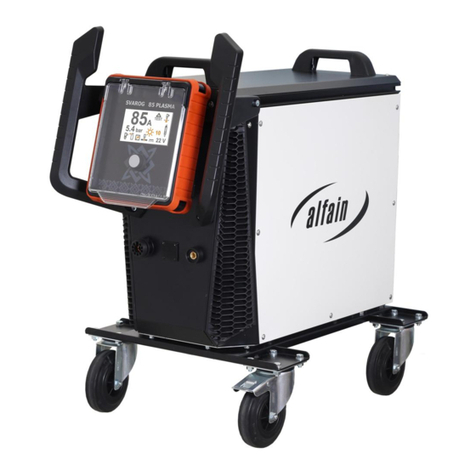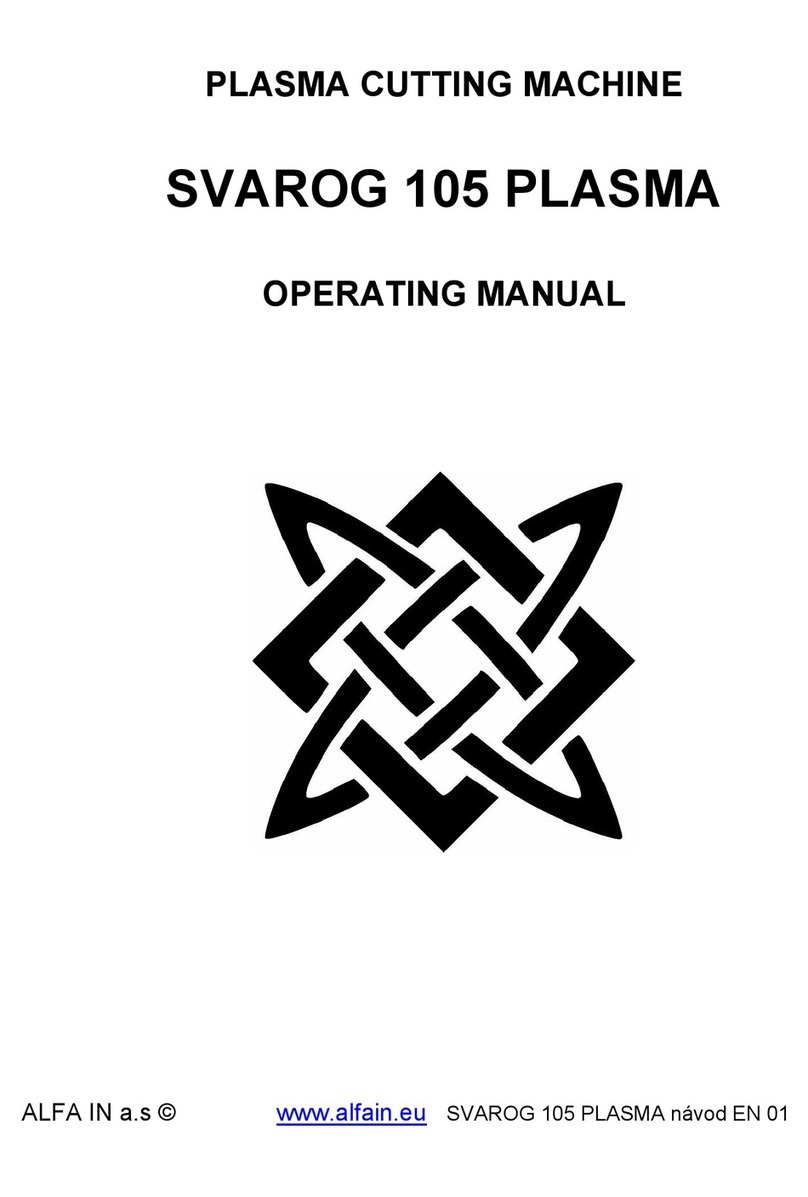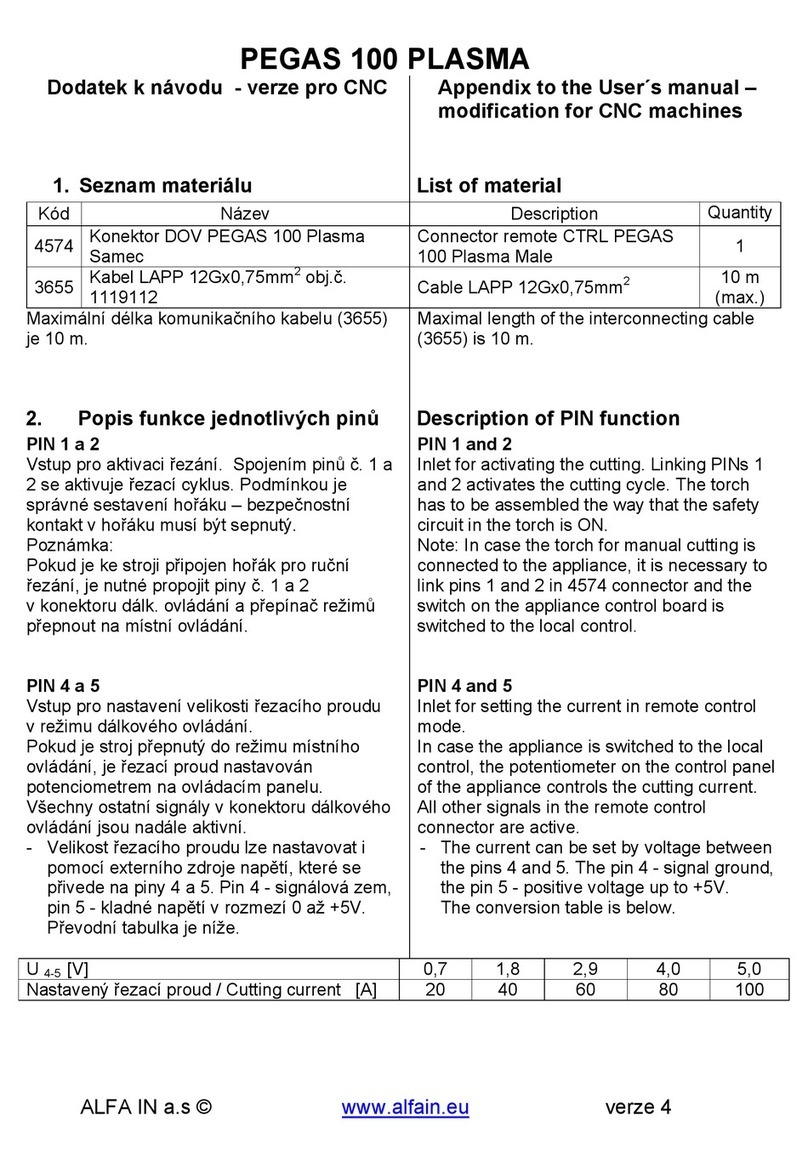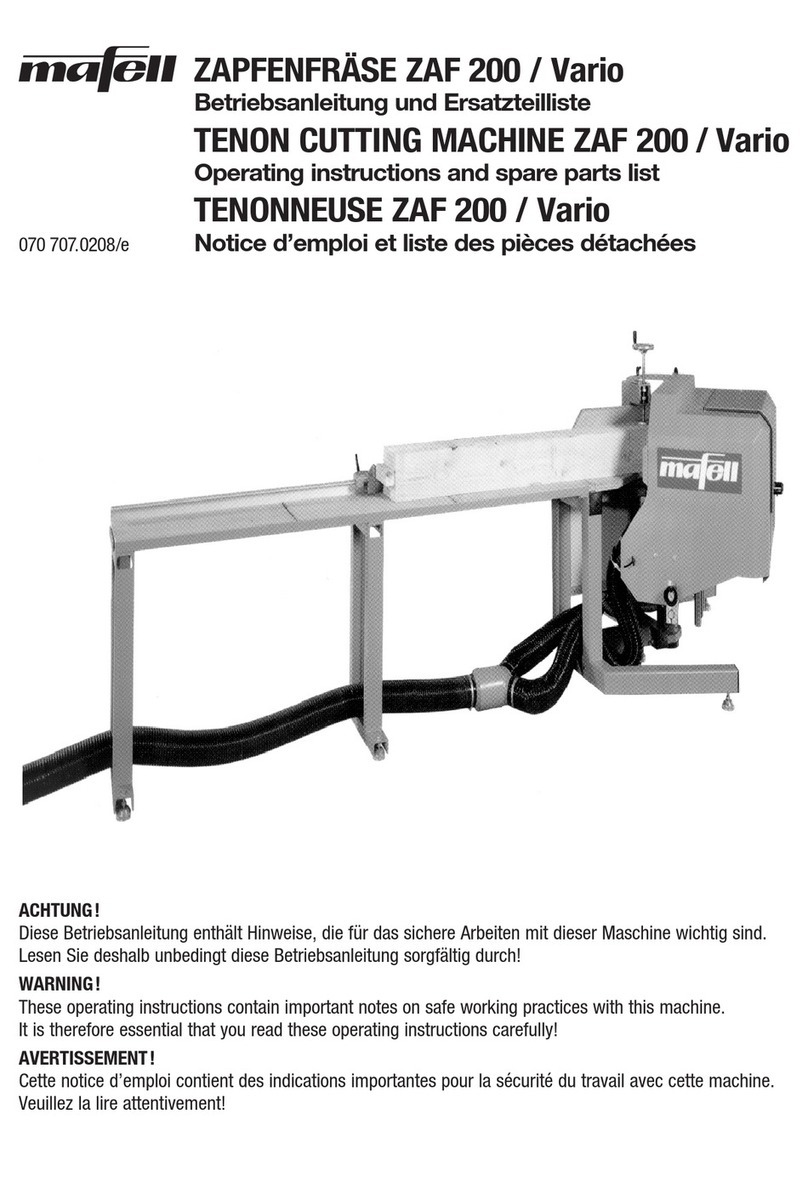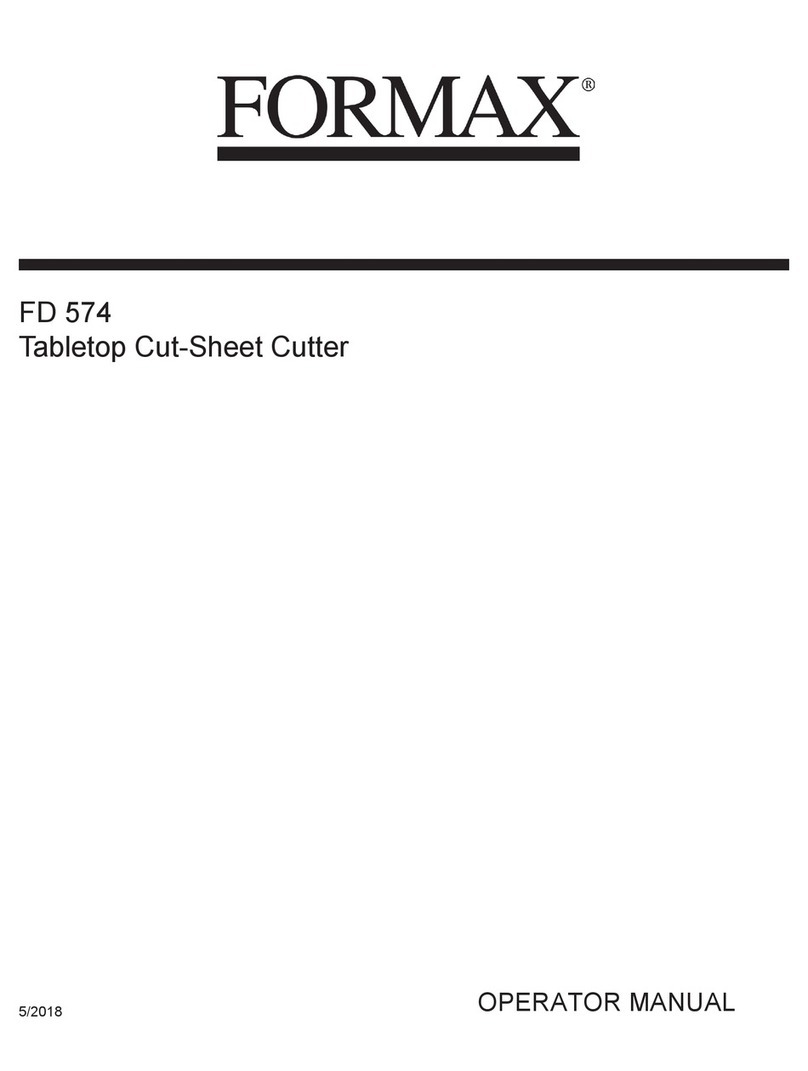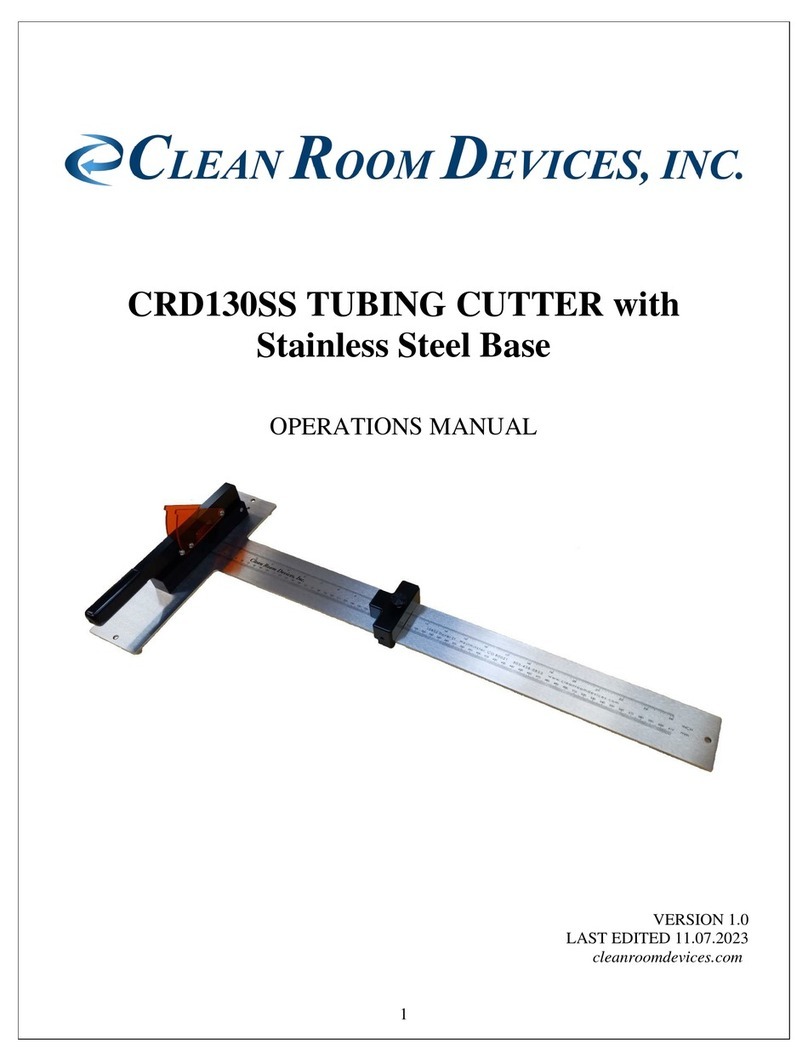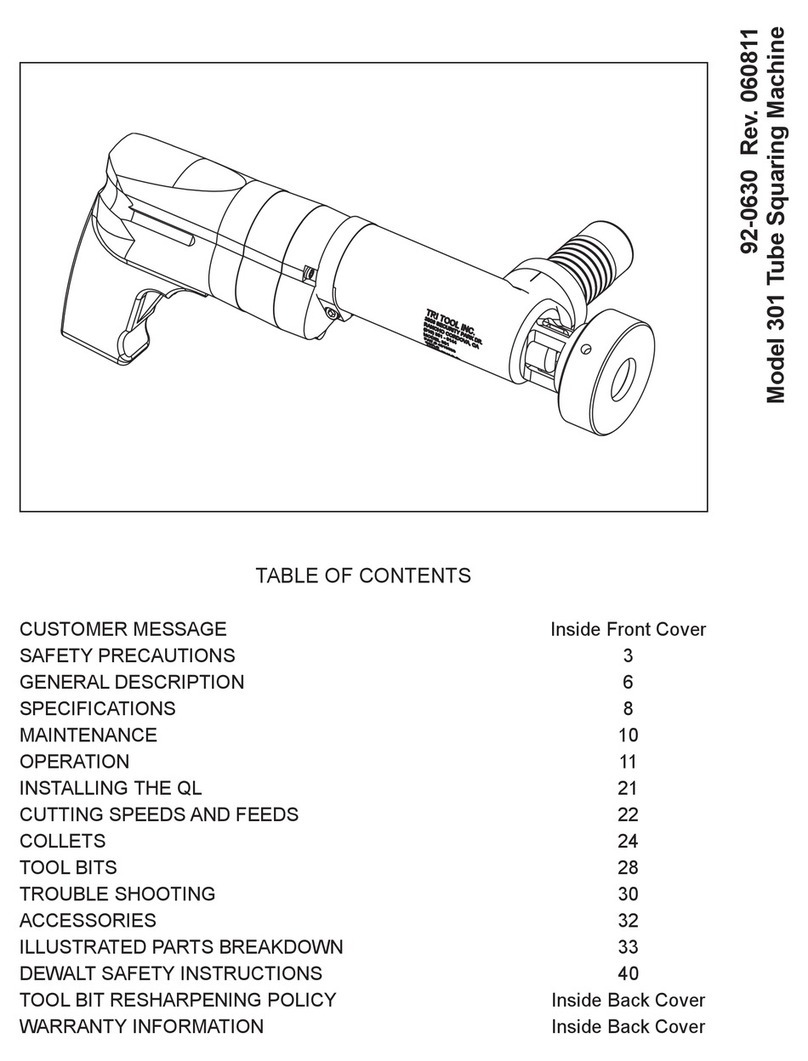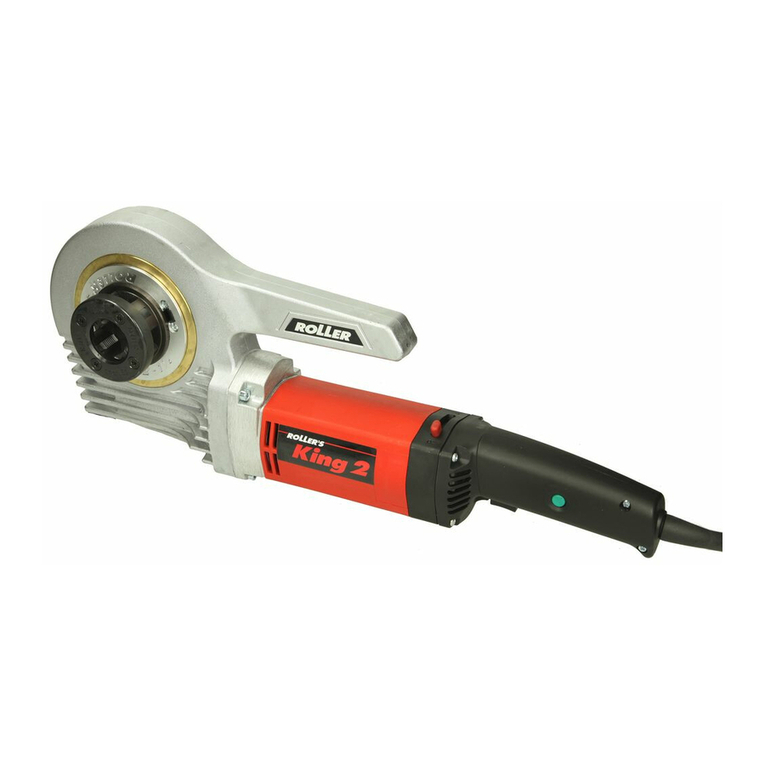4/21
ALFA IN a.s ©www.alfain.eu3
2. SAFETY INSTRUCTIONS AND WARNINGS
1. OPERATION AND MAINTENANCE OF PLASMA ARC EQUIPMENT CAN
BE DANGEROUS AND HAZARDOUS TO YOURHEALTH.
2. Plasma arc cutting produces intense electric and magnetic emissions that
may interfere with the proper function of cardiac pacemakers, hearing aids,
or other electronic health equipment. Persons who work near plasma arc
cutting applications should consult their medical health professional and the
manufacturer of the health equipment to determine whether a hazard exists.
3. Once the packing has been opened, make sure that the machine is not
damaged. If in any doubt, call the service centre.
4. This equipment must only be used by qualified personnel.
5. During installation, any electric work must only be carried out by trained
personnel.
6. The machine must be used in a dry place with good ventilation.
7. Make sure that no metal dust can be drawn in by the fan inside the
machine, as this could cause damage to the electronic circuits.
8. It is prohibited to connect more than one INVERTER generator in series or
in parallel.
9. When installing the machine, follow the local regulations on safety.
10. The position of the machine must allow easy access by the operator to
the controls and connectors.
11. When the cutting machine is operating, all its covers and doors must be
closed and well fixed.
12. Do not expose the cutting machine to direct sunlight or to heavy rain.
This equipment conforms to protection rating IP23S.
13. The operator must wear gloves, clothes, shoes, and a helmet or a
welder’s helmet, which protect and are fire-resistant in order to protect him
against electric shock, flashes and sparks from cutting.
14. The operator must protect his eyes with safety visor or mask designed for
welding, fitted with standard safety filters. He should also be aware that
during plasma cutting ULTRAVIOLET RADIATION is emitted. Therefore it is
vital that his face is also protected from radiation. Ultraviolet rays produce
the same harmful effect as sun burning on unprotected skin.
15. The operator is obliged to warn anyone near the cutting area of the risks
that cutting involves and to arrange to provide adequate protection
equipment.
16. Keep all fumes and gases from the breathing area.
17. Keep your head out of the fume plume.
18. Use an air-supplied respirator if ventilation is not adequate to remove all
fumes and gases.
19. The kinds of fumes and gases from the plasma arc depend on the kind of
metal being used, coatings on the metal, and the different processes. You
must be very careful when cutting or welding any metals which may contain






